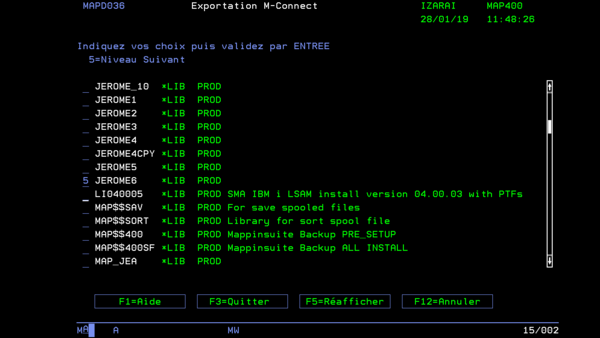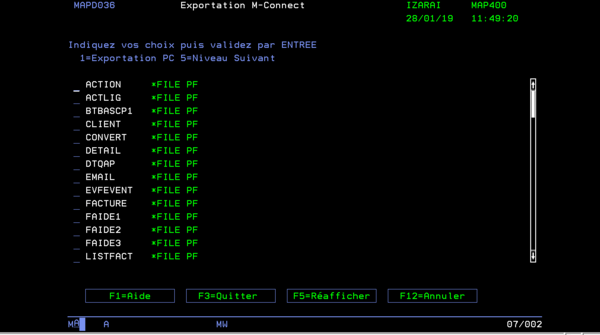OPALE - 10.0 - Utilisation - Exporter les fichiers - MAPREPORT/en
Différence entre versions
De MappingDoc
(Page créée avec « OPALE:10.0:Usage:Exporting files: MAPREPORT ») |
(Page créée avec « This command allows you to export files. * Run the MAPREPORT command, then specify in which library the file is located using option 5=Next Level. * The list of all physic... ») |
||
| Ligne 1 : | Ligne 1 : | ||
| − | + | This command allows you to export files. | |
| − | * | + | * Run the MAPREPORT command, then specify in which library the file is located using option 5=Next Level. |
| − | * | + | * The list of all physical files of the chosen library will be displayed. Enter 1 to export the table or 5 to get to the member level. |
| − | * | + | * At member level, there are two possible choices: export the member or launch the creation of a spooled file from the member, see: [[OPALE:10.0:Utilisation:Commande MAPOFFICE|MAPOFFICE command]]. |
Version du 31 mai 2019 à 13:54
This command allows you to export files.
- Run the MAPREPORT command, then specify in which library the file is located using option 5=Next Level.
- The list of all physical files of the chosen library will be displayed. Enter 1 to export the table or 5 to get to the member level.
- At member level, there are two possible choices: export the member or launch the creation of a spooled file from the member, see: MAPOFFICE command.

